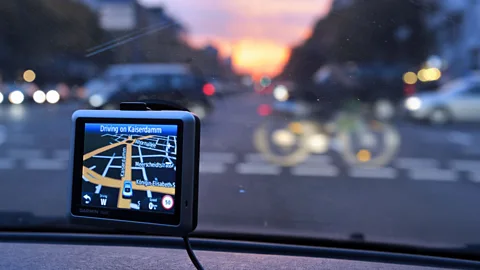How does my sat-nav really know where I am?
 Getty Images
Getty ImagesIt has revolutionised navigation, bringing military grade satellite positioning to the comfort of your car. But how does it work? James May steers us through the science behind sat-nav.
All modern sat-nav systems rely on the Global Positioning System (GPS) known as Navstar. This is powered by a system of 24 satellites orbiting the Earth at an altitude of approximately 11,500 miles (24,000km). They were originally put into orbit by the United States during the Cold War under top secret conditions, to guide intercontinental ballistic missiles to their targets.
Each GPS satellite contains an extremely accurate clock and continually broadcasts its location and time, known as ephemeris data. A GPS receiver works by comparing the location and time data to its own and working out its distance from the satellite. This by itself is pretty useless for pinpointing position, but when data from several satellites are used simultaneously it's very effective. The minimum number of satellites for effective navigation is four, but the way they are arranged means there are usually 10 above each part of the world at any one time.
GPS is basically a very hi-tech version of the traditional navigation technique, triangulation. The signal from the satellites was at one time degraded which gave inaccuracies of up to 330ft (100m) but this changed in the year 2000, and accuracy is now within 50ft (15m). However the US military can still scramble or turn GPS off at will.
Today's navigation systems go beyond GPS. Cell phones can triangulate their position between mobile phone masts, whereas sat-navs contain compasses and accelerometers to help them navigate safely. But as many frustrated drivers know, this is still far from being full-proof.
For more videos subscribe to the Head Squeeze channel on YouTube.
If you would like to comment on this video or anything else you have seen on Future, head over to our Facebook page or message us on Twitter.
